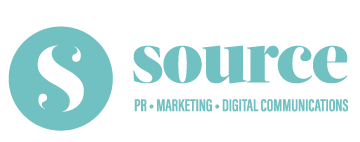Why Inheritance Tax Changes Demand More Than Just Financial Planning
The Role of Strategic Communications
As we prepare for the Budget on 26th November and the government seemingly moves forward with significant changes to inheritance tax (IHT) rules, many families, business owners, and wealth advisers are rightly focused on financial planning.
The proposed reforms have proved to be controversial and divisive – with the issue of ‘asset rich, cash poor’ generational farms taking much of the focus of these policies – and they will have long-term implications for succession plan
ning, asset protection and liquidity.
But amid the spreadsheets and solicitors, there’s one critical aspect that we’re worried is being largely overlooked: communications.
At Source, we work with a wide range of businesses in the Agri-sector and wider rural economy. Whether you’re a business owner preparing to pass down a family enterprise, a farmer concerned about land being taxed, or a high-net-worth individual reviewing your estate strategy, how you communicate may be just as important as how you calculate.
Here’s why doing a bit of PR planning – whether that’s for communications with your family, employees, community, or even the media – is a wise move, and should probably be an integral part of your inheritance strategy:
-
Your reputation may be at stake
The optics around inheritance can be sensitive, particularly in a cost of living crisis, when low economic growth and wages aren’t rising in real terms. When the public sees wealthy individuals or business owners making last-minute estate changes, it can be perceived as opportunistic or evasive – even if it’s perfectly legal and responsible. If your business is community-based, employs local people, or relies on reputation-driven goodwill, you’ll want a strategy to manage perception. That includes internal messaging for staff and external messaging for stakeholders.
-
Complexity needs clarity
IHT reforms are technical (thus why you’re probably using specialist financial and legal advisers) and any of your stakeholders – whether they’re family members, shareholders, or employees – may not understand how these changes impact them or the decisions you’re making. A good communications plan turns complexity into clarity. Communicating complicated information clearly, and ensuring all communications are legally and financially accurate, will ensure your intentions are clearly conveyed and reduces the risk of confusion, gossip, speculation or legal complication.
-
Planning for the unexpected
In times of transition, whether it’s the death of a business owner, the sale of a family asset, or a sudden tax burden, emotions can often run high. Without pre-agreed communications protocols, misinformation and reputational damage can spread fast. A proactive PR strategy includes crisis planning, allocates the correct spokespeople, agrees the right messaging and tone, so that when difficult conversations become necessary, you’re prepared to communicate with empathy, transparency, and control.
-
Engaging with policy and Public Affairs
If you believe the reforms will impact your sector unfairly – as many in the farming and family business communities do – effective communications can significantly amplify your voice. That might involve coordinated messaging with trade bodies, media outreach, or contributing to policy discussions. A PR agency can often provide a Public Affairs capability and can organise collaboration with other groups who are in the same shoes as you and can help you engage constructively and credibly.
-
Legacy is more than money
Ultimately, inheritance isn’t just about wealth – it’s about what, and who, you leave behind and as well passing on the best possible financial situation, you also need to ensure that your reputation, brand and values are in best possible condition too. That includes your reputation and history, but also the future of your business or estate. Communications planning ensures that your legacy is framed in the way you intend, for the people who matter most.
Planning for a smooth transition…
Yes, speak to your accountant. Yes, talk to your solicitor. But don’t leave your communications to chance. Strategic communications and PR can protect your reputation, support your objectives, and help you navigate the human side of inheritance tax – one thoughtful message at a time.

















